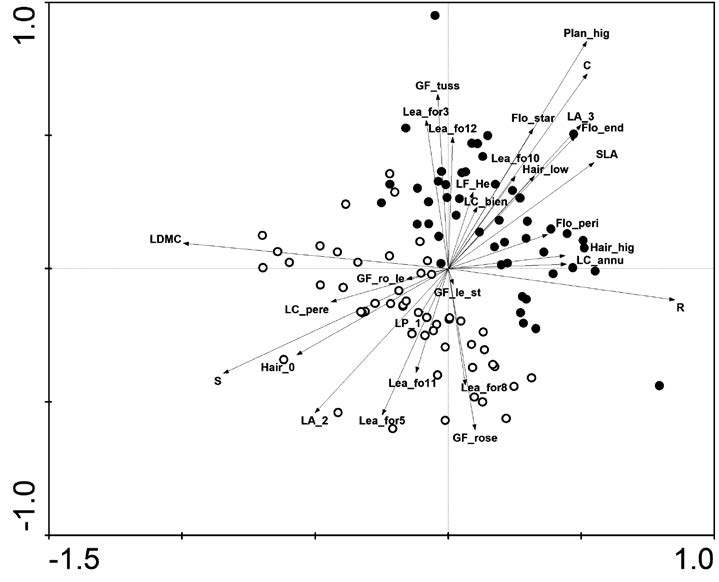Floristic and Functional comparision of karst pastures and karst meadows from the North Adriatic Karst
DOI:
https://doi.org/10.3986/ac.v40i3.61Povzetek
In the present study, we compared the species richness and the floristic and functional composition of two types of extensively managed, species rich dry grasslands (class Festuco-Brometea) from the North Adriatic Karst: karst pastures (alliance Satureion subspicatae) and karst meadows (alliance Scorzonerion villose). Karst pastures are characterized by shallow rocky soils, high pH, and dry, warm conditions, whereas karst meadows have developed on deeper soil, with more humus and moisture and neutral to alkaline pH. The data set included a table with 100 phytosociological relevés of the studied grasslands and a matrix with 15 functional traits determined for 180 plant species. we found high species richness in these grasslands but no statistically significant differences in species richness between karst pastures and meadows. Differences in floristic composition were analysed with Detrended Correspondence Analysis, which supported a clear division between the two vegetation types and indicated that species composition could best be explained in terms of soil humidity and nutrient availability. We also detected several differences in plant functional traits between meadows and pastures. Some of the traits indicate greater resource availability on karst meadows (in particular, high SLA, low LDMC). In contrast, karst pastures have more slow-growing species with a combination of traits that can be interpreted as an avoidance strategy in relation to disturbance (e.g., grazing) in low productive habitats (e.g., low SLA, high LDMC, early flowering species and plants with rosette). A lower relative proportion of competitors (C) and ruderals (R), and a higher relative proportion of stress-tolerators (S) in karst pastures also suggested that these grasslands generally experience higher intensities of stress when compared to karst meadows, presumably owing to lower resource availability on stony, shallow soil. we could conclude that karst meadows and pastures differ significantly in both floristic composition and functional trait means, owing to their distinctive land-use (disturbance) and environmental conditions.Prenosi
Podatki o prenosih še niso na voljo.

Prenosi
Objavljeno
2011-12-31
Kako citirati
Pipenbaher, N., Kaligarič, M., & Škornik, S. (2011). Floristic and Functional comparision of karst pastures and karst meadows from the North Adriatic Karst. Acta Carsologica, 40(3). https://doi.org/10.3986/ac.v40i3.61
Številka
Rubrike
Original papers
Licenca
Avtorji jamčijo, da je delo njihova avtorska stvaritev, da v njem niso kršene avtorske pravice tretjih oseb ali kake druge pravice. V primeru zahtevkov tretjih oseb se avtorji zavezujejo, da bodo varovali interese založnika ter da bodo povrnili morebitno škodo.
Podrobneje v rubriki: Prispevki




